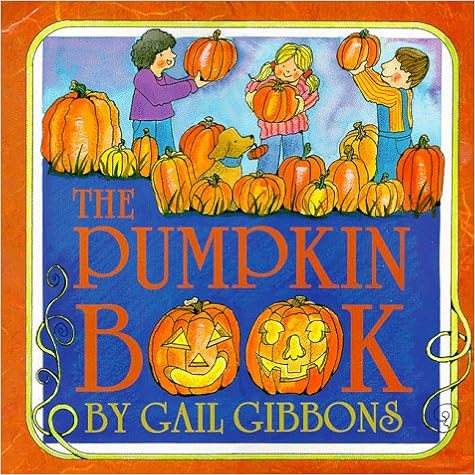Are you thinking that it's a while before Halloween? You'd be surprised. Over here it's already pumpkin-this and pumpkin-that and when-can-we-carve-pumpkins. If you're trying to pick up books from the library or have them delivered to your house in time for the holiday, you might want to get on that, and here's a list to help.
One of my children is easily frightened, but also wants to participate in social events like trick-or-treating. Thus, we've spent many Halloweens searching for books that were not too scary. Here are our favorites:
This book was perfect for our needs because mouse and mole take turns frightening each other and then overcome their fears together.

Halloween Is... by Gail Gibbons.
This book talks about the origins of Halloween.

This one talks about how pumpkins are grown and about their historical and cultural use. It also mentions Halloween briefly. It goes best with the Halloween Is... book above by the same author.

(Get this one in Spanish!)
This one also talks about how pumpkins grow, but for younger children.

Who doesn't love a good (or really bad...) joke? Humor helped our kids with Halloween.
I thought the illustrations in this one would be too scary for my kids but apparently we have progressed past the mention of the word "ghost" frightening them. Whew! I love this parody of Goodnight, Moon.
No Halloween children's book list would be complete without...

AlphaOops Halloween by Alethea Kontis, one of our favorite authors!
No Halloween children's book list would be complete without...

AlphaOops Halloween by Alethea Kontis, one of our favorite authors!
Here's hoping your children enjoy a safe Halloween!
Like this post? Then you'll like my upcoming Halloween picture book! Here's a sneak peak of Charlie Cat.
Like this post? Then you'll like my upcoming Halloween picture book! Here's a sneak peak of Charlie Cat.



